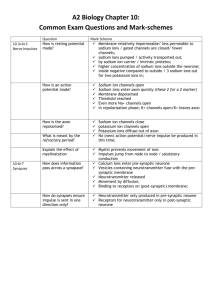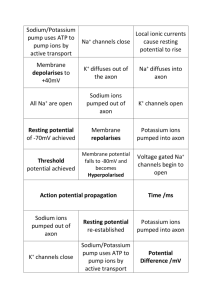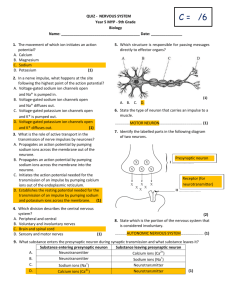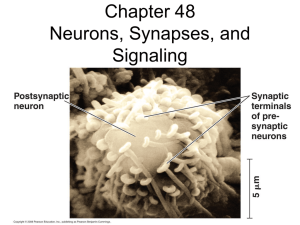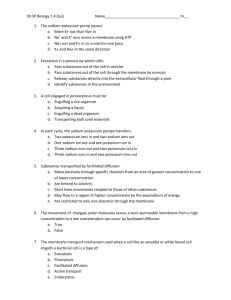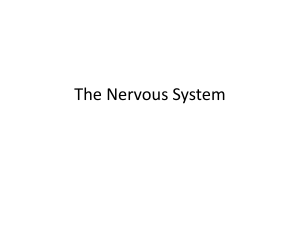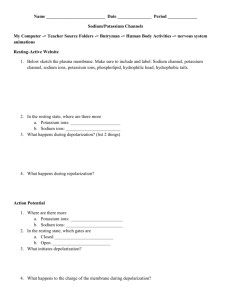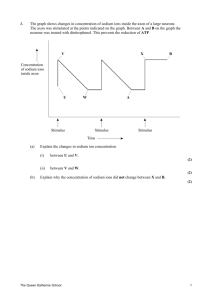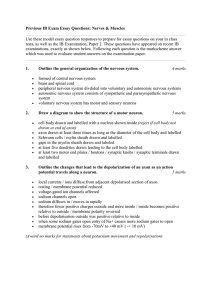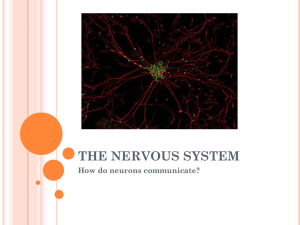Nerves minitest MARKING
advertisement
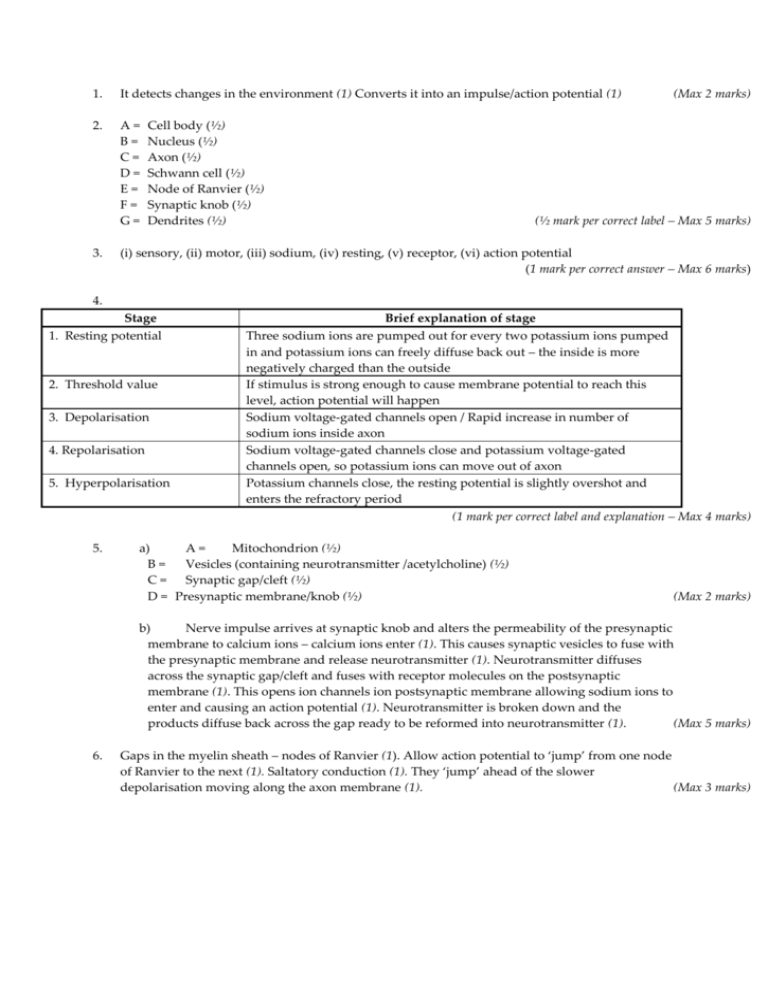
1. It detects changes in the environment (1) Converts it into an impulse/action potential (1) 2. A= B= C= D= E= F= G= 3. Cell body (½) Nucleus (½) Axon (½) Schwann cell (½) Node of Ranvier (½) Synaptic knob (½) Dendrites (½) (Max 2 marks) (½ mark per correct label – Max 5 marks) (i) sensory, (ii) motor, (iii) sodium, (iv) resting, (v) receptor, (vi) action potential (1 mark per correct answer – Max 6 marks) 4. Stage 1. Resting potential 2. Threshold value 3. Depolarisation 4. Repolarisation 5. Hyperpolarisation Brief explanation of stage Three sodium ions are pumped out for every two potassium ions pumped in and potassium ions can freely diffuse back out – the inside is more negatively charged than the outside If stimulus is strong enough to cause membrane potential to reach this level, action potential will happen Sodium voltage-gated channels open / Rapid increase in number of sodium ions inside axon Sodium voltage-gated channels close and potassium voltage-gated channels open, so potassium ions can move out of axon Potassium channels close, the resting potential is slightly overshot and enters the refractory period (1 mark per correct label and explanation – Max 4 marks) 5. a) A= Mitochondrion (½) B= Vesicles (containing neurotransmitter /acetylcholine) (½) C = Synaptic gap/cleft (½) D = Presynaptic membrane/knob (½) (Max 2 marks) b) Nerve impulse arrives at synaptic knob and alters the permeability of the presynaptic membrane to calcium ions – calcium ions enter (1). This causes synaptic vesicles to fuse with the presynaptic membrane and release neurotransmitter (1). Neurotransmitter diffuses across the synaptic gap/cleft and fuses with receptor molecules on the postsynaptic membrane (1). This opens ion channels ion postsynaptic membrane allowing sodium ions to enter and causing an action potential (1). Neurotransmitter is broken down and the products diffuse back across the gap ready to be reformed into neurotransmitter (1). (Max 5 marks) 6. Gaps in the myelin sheath – nodes of Ranvier (1). Allow action potential to ‘jump’ from one node of Ranvier to the next (1). Saltatory conduction (1). They ‘jump’ ahead of the slower depolarisation moving along the axon membrane (1). (Max 3 marks) 7. Strength of stimulus is contained in the frequency of action potentials / the stronger the stimulus the more frequent the impulses (1) Total /28
